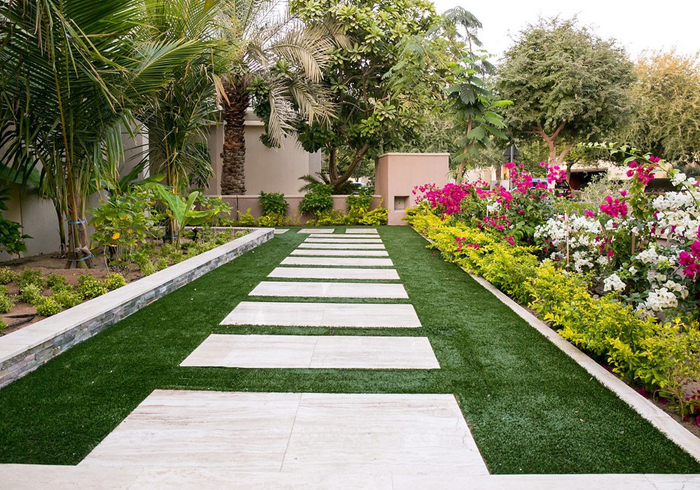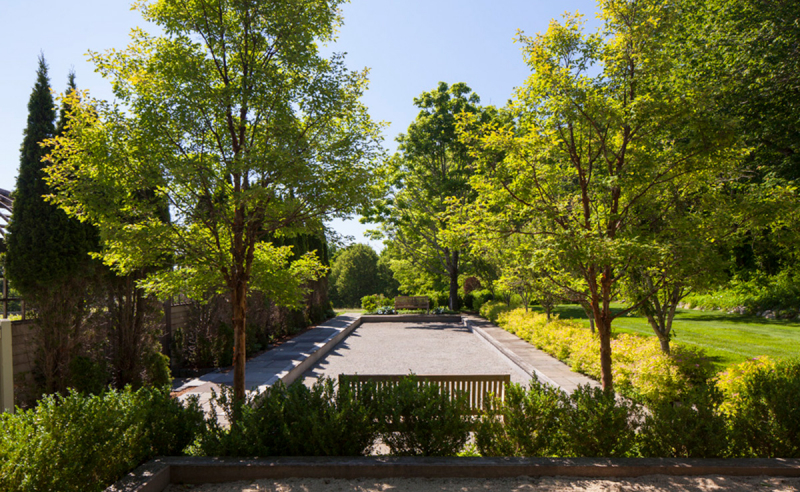The Ultimate Guide To Landscape Design
The Ultimate Guide To Landscape Design
Blog Article
What Does Landscape Design Mean?
Table of ContentsAbout Landscape DesignLandscape Design for DummiesExcitement About Landscape DesignEverything about Landscape Design
When designing a domestic landscape, one of the most crucial step is to put a strategy on paper. Developing a plan of attack will save you time and cash and is more probable to cause a successful style. Landscape Design. A plan of attack is established via the 'design process': a step-by-step approach that thinks about the ecological conditions, your wishes, and the components and principles of designThe five actions of the layout procedure consist of: 1) performing a site stock and evaluation, 2) establishing your needs, 3) producing practical layouts, 4) developing theoretical layout strategies, and 5) drawing a last layout strategy. The initial 3 steps establish the aesthetic, practical, and horticultural requirements for the design. The last two steps after that apply those requirements to the production of the last landscape strategy.
This is an essential action for both plant option and positioning and finding family members tasks and features. It is necessary since the exact same climate conditions that affect the plantstemperature, humidity, rain, wind, and sunlightalso affect you, the user. The next action is to make a checklist of your requirements and desiresthis assists you identify how your backyard and landscape will be made use of.
The useful representation is after that used to situate the task spaces on the site and from this diagram a conceptual plan is established - Landscape Design. The last step is a final design that consists of all the hardscape and growing information that are essential for installment. Throughout the style process there are ten vital points to think about: for plant selection and task place by considering what you want and require to help identify forms and arrange rooms by marking activity locations and relating to components for both the environment and the individual by using massing and layering techniques such as transition areas and prime focus in the products, the colors, and the surface textures for the growth and maintenance of plants by using lasting design techniques A complete stock and evaluation of the site is necessary to identify the ecological problems for plant development and the ideal use the site
3 Simple Techniques For Landscape Design
The kind of dirt figures out the nutrients and moisture offered to the plants. It is always best to use plants that will grow in the existing dirt. Although soil can be modified, modification is frequently pricey and most times inefficient. Existing vegetation can offer hints to the soil kind. Where plants expand well, keep in mind the dirt problems and make use of plants with comparable expanding needs.

Sun/shade patterns, the amount and size of direct exposure to sunlight or color (Number 1), develop microclimates try this site (often called microhabitats). Recording website problems and existing greenery on a base map will certainly expose the place of microclimates in the lawn. Plants generally come under one or two of four microclimate categories-full sunlight, partial shade, color, and deep color.
Utilities such as power lines, septic containers, underground utilities and roof overhangs determine plant location. Make use of a property surveyor's plat of your property for the borders and area of your home.
Landscape Design - Truths
Budget problems include the products, first installment costs and the on-going upkeep costs. Determine the time and cash you want to place right into maintaining the plants and hardscape-be realistic concerning your intentions and capability. Number 3. Present use areas. Credit Rating: Gail Hansen, UF/IFAS Number 4. Proposed usage areas. Credit Scores: Gail Hansen, UF/IFAS There are several landscape style motifs- from simple to complex, yet it is practical to pick one to direct your plant and product selection.

Choose if you wish to open your lawn, shut your lawn, or a little of both, to these sights. In various other words, do you desire the yard to confine the room around you and connect primarily to your house, or do you desire the garden to open sights and look exterior, connecting to the surroundings? This will certainly give you a starting point to think of a motif.
The Ultimate Guide To Landscape Design

Every yard ought to have a kind theme, but not all yards have a style theme. Many residential yards have no specific style except to blend with the residence by duplicating information from the architecture such as products, shade, and type.
In a type motif the company and shape of the areas in the backyard is based either on the form of the residence, the form of the locations in between the residence here are the findings and the building borders, or a favored form of the property owner. The type style determines the shape and organization (the layout) of the spaces and the web links in between them.

Report this page